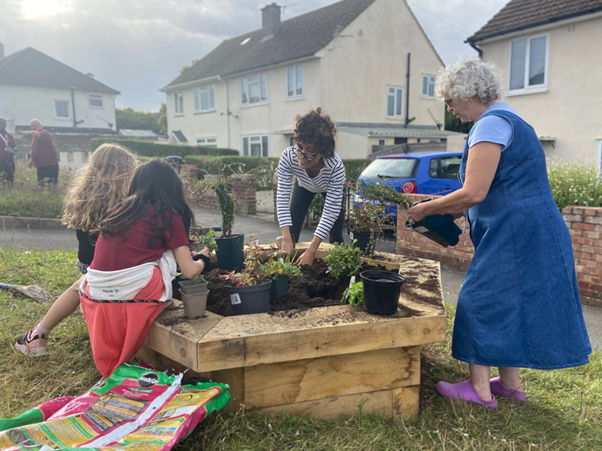Healthy place shaping - latest news
Better Housing Better Health: Home Visits Key to Addressing Health in Housing
A recent study by the University of Salford, in collaboration with Oxfordshire County Council and the National Energy Foundation, evaluated the Better Housing Better Health service. This service provides energy advice and support to Oxfordshire residents.
The study, which involved interviews with both service recipients and stakeholders, highlights the crucial role home visits play in addressing the link between housing conditions and health.
Key findings:
- Addressing Complex Needs: The Better Housing Better Health program serves a vital function by tackling the various challenges faced by Oxfordshire residents. Energy inefficiency in homes can exacerbate health issues, and this service offers targeted support to improve living conditions.
- Value of Home Visits: The study emphasizes the importance of home visits. Advisors gain a deeper understanding of a household's specific situation by being present in the home. This personalized approach allows residents to feel valued, listened to, and better understood.
- Part of a Support Ecosystem: Better Housing Better Health complements the existing support network in Oxfordshire. It injects additional resources and, importantly, the expertise to visit residents and provide tailored solutions for their energy needs.
- Future Focus on Energy Challenges: The research suggests a growing need for support related to energy challenges faced by vulnerable individuals and families. While generalized advice is helpful, it has limitations. Future funding should address this growing need by supporting initiatives that directly improve homes and influence landlords, housing providers, and energy suppliers.
This study underscores the importance of tailored support in tackling the complex relationship between housing conditions and health. Home visits, as facilitated by Better Housing Better Health, offer a valuable approach to ensure residents feel valued and receive the specific assistance they need to thrive in healthy homes.
Park and Stride pilot shows how it can support active travel to school
An article published in the Journal of Transport and Health reports how OCC’s Park and Stride intervention encouraged primary school children to walk to school. The pilot showed that interactive wayfinding routes have potential to increase rates, and enhance enjoyment of, active school travel and active travel. However, they are likely to be insufficient alone to create significant modal shift and may have greater impact if implemented alongside other interventions which encourage active travel. As a place-based intervention they may have additional benefits by encouraging activity along the routes outside of school travel. For more information see the full article.
Review of community initiatives shows how they can address loneliness and develop social capital
A review of the research literature shows that engagement with community initiatives can provide a formalised route to help people develop connections and counteract limitations in their social networks. However, individuals may be wary about attending community initiatives, needing support and encouragement to do so. Social prescribing link workers are one means of motivating people to access groups, events or organisations that could improve their well-being. Further research is needed to better understand what aspects of community initiatives best support the development of social capital.
For more information see the full article.
Publication of two ‘how to’ guides to promote community growing
Just in time for the growing season, OCC’s healthy place shaping team and its partners have published two ‘how to guides’ to encourage communities to create local growing spaces.
The Edible Streets Guide produced by Oxford Brookes University and based on a pilot street in Barton, describes how communities can transform the space on the pavement outside your front door or the grass verge you pass every day on your way to work.
These empty, unloved spaces can become thriving places where neighbourhoods come together to grow plants and food. The Guide aims to provide tips and practical advice to help turn ideas for local growing projects in Oxfordshire into reality.
Advice on creating growing spaces at a larger scale is now available through a ‘Community Garden Playbook’ which public health commissioned Tila Rodriguez-Past, the Garden Officer of the Bridge Street Community Garden in Banbury, to produce.
The guide captures the Garden's transformation across the seasons, hoping to inspire others to consider doing the same in their community. It talks you through examples and stories collected from the Garden, offering practical suggestions and tips as well as more thoughtful and creative perspectives to consider when starting your community garden journey.
The Playbook will support the creation of two new community gardens in Blackbird Leys and Berinsfield which are being developed by the healthy place shaping team and the Community Action Group Network.
Transforming publicly accessible land into growing space can green the local environment, create opportunities to improve health and well-being, promote climate action and help build strong communities.

Planting up the edible street in Malford Road, Oxford